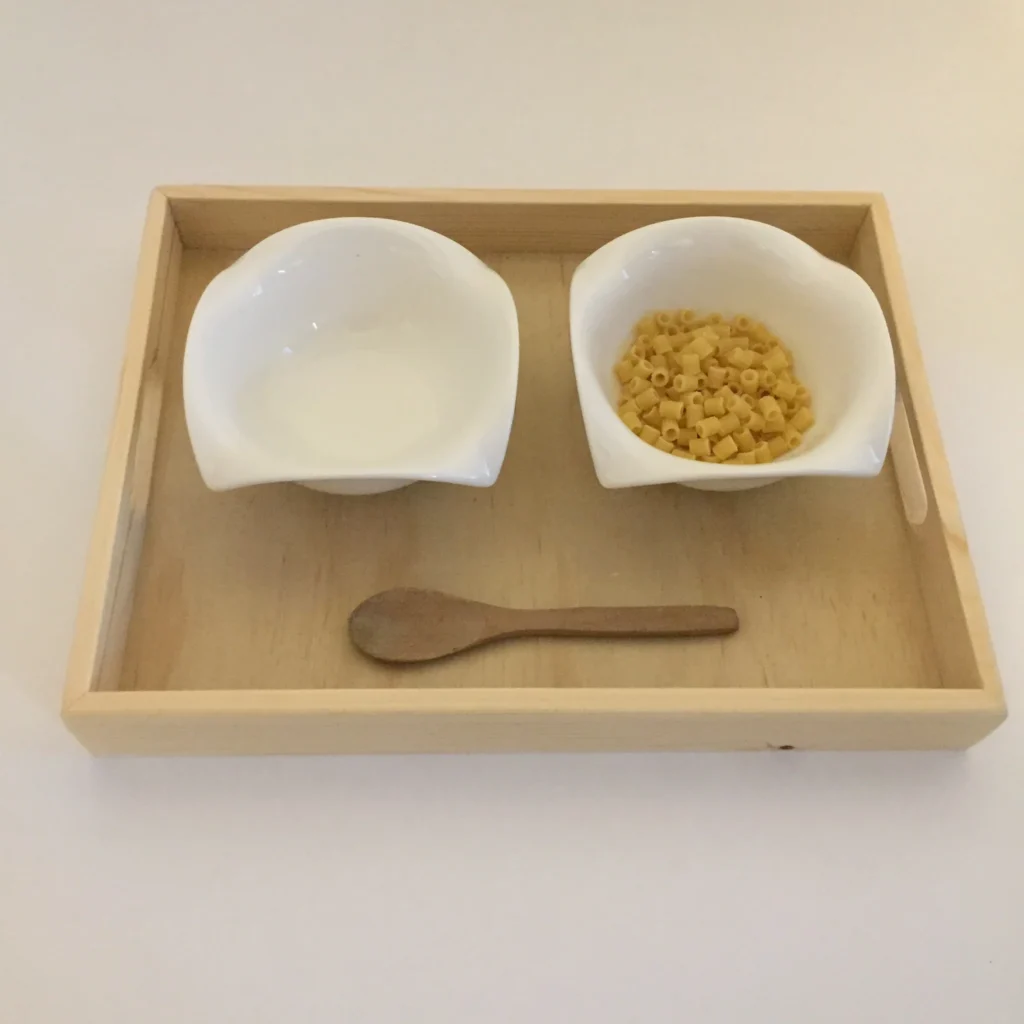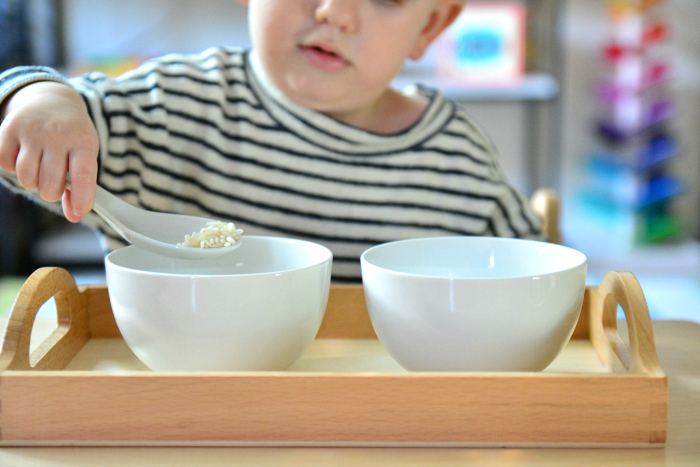Practice Life
Unlock Your Child’s Motor Skills with a Fun Montessori Activity: Spooning
Spooning is a great way for children to develop focus, concentration, visual and fine motor skills, as well as the three-finger grip. Not only does spooning work provide an early childhood classroom with a unique learning opportunity, but it also offers plenty of room to be creative and tie in themes throughout the year. With the variety of materials and activities available, spooning is sure to be an engaging and rewarding experience for any student.
Spooning (Transferring with a Spoon)
Suitable Age: 2 1/2+
Materials: A tray consisting of two bowls (one empty, the other consisting of a dry item: ex, lentils, beans, chickpeas, etc.) and a spoon.
Direct Aim: To use a spoon to transfer the dry goods from one container to another independently.
Indirect Aim:
- Refined movement of muscles in the hand
- Concentration
- Hand-eye coordination
- Independence

Presentation/ Child instruction:

- Begin with picking up the spoon, and show her the placement of the spoon between the three fingers of the hand. Slowly begin to scoop up the dry goods and transfer the goods inside the empty bowl.
- About halfway through, invite the child to have a turn.
- Once all the dry goods have been scooped from one bowl and into the second bowl, invite the child to perform the spooning exercise again if she would like.
- Remind the child to turn the tray if she wishes to continue.

Point of interest:
To use a spoon to transfer the dry goods from one container to another independently
Control of Error:
- Spilling the dry goods
- Noise
- Non-completion of the activity
- Unable to scoop the dry goods with the spoon
- Holding the spoon incorrectly
>> Read more: Unlock Your Child’s Motor Skills with a Fun Montessori Activity: Transferring beads with Tweezers
